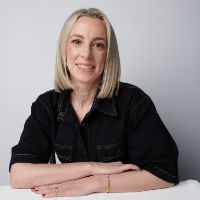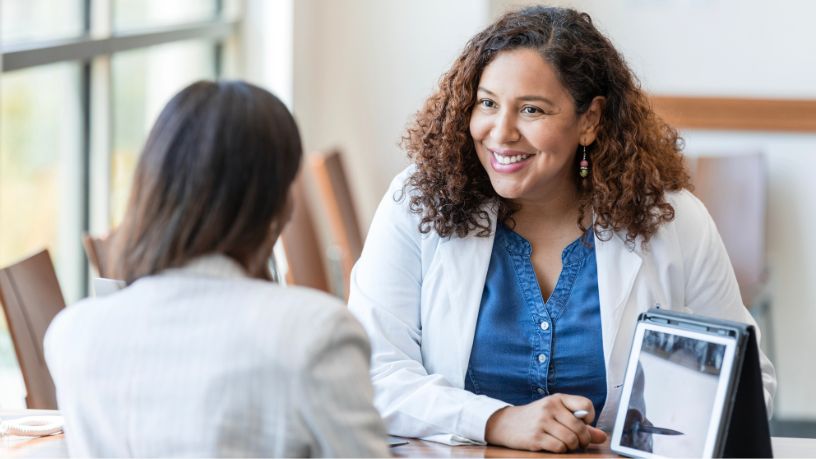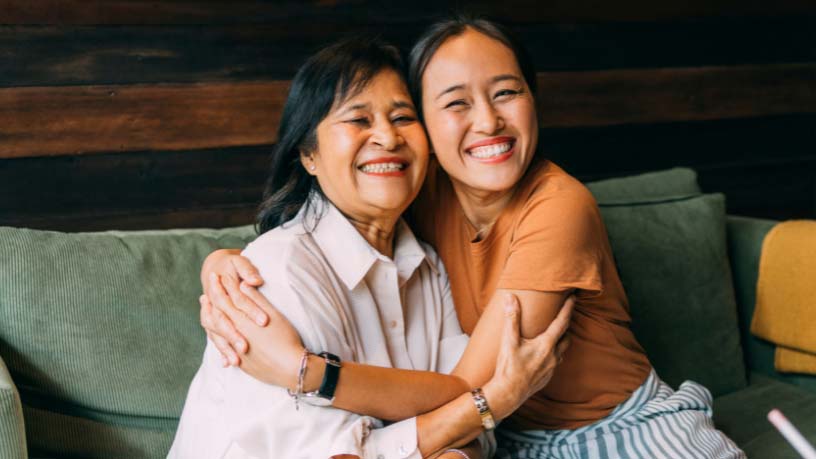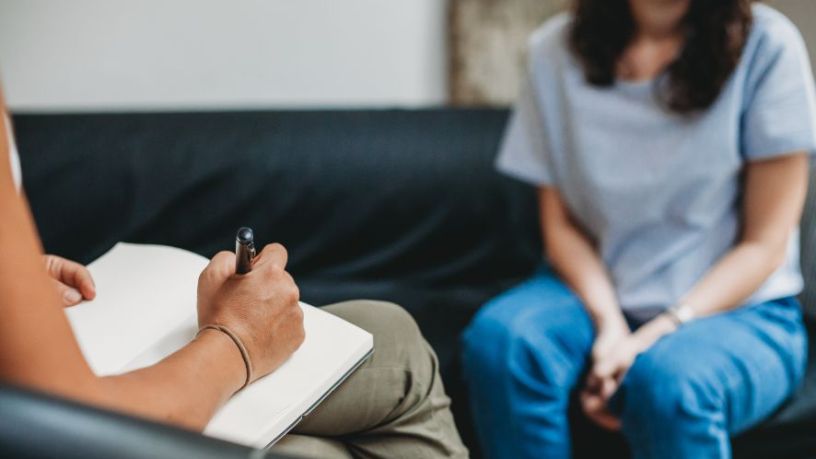If you notice a change in your breasts, you should see your GP straight away.
On this page
Key takeaways
Every cancer treatment is different.
It's okay not to feel 'normal' after active treatment ends.
Sarah was diagnosed with invasive ductal carcinoma 4 years ago. This type of cancer accounts for around 75% of all breast cancer diagnoses.1
The 46-year-old shares her story in her own words.
The diagnosis
I first noticed a lump in my right breast in 2020. I had no family history of breast cancer, so I didn't do anything about it for a while. But I had a nagging feeling, so eventually I went to see my GP. She sent me to have a mammogram and an ultrasound, and then I was sent for a biopsy.
Within 2 days, she called me with my results; I had breast cancer.
Next steps
My first thought was, 'I'm going to die'. I was terrified and overwhelmed. Things moved very quickly. I was referred to a breast surgeon who told me more about my diagnosis and what it meant. My cancer was stage 3 because there was some lymph node involvement. It was also oestrogen positive and HER2 positive. It was growing quite fast, which was a bit of a shock.
Treatment
2 weeks after my diagnosis, I started chemotherapy. I had 6 rounds; my treatment was every 3 weeks, for 8 hours at a time. After my third round, a scan showed the tumour was responding well to the treatment, which made it easier to keep going.
The more chemo you have, the worse you feel. Other drugs added to my side effects; I had a racing heart, nausea and extreme fatigue. For me, the key to getting through it was exercise. Even on days I could barely lift my head off the pillow, I would try and walk a couple of laps around the block to try and help my body process all the chemicals. I also worked all the way through my treatment.
I wanted life to remain as normal as possible, so it helped me to have something to focus on.
After 6 rounds of chemotherapy, I had a mastectomy. After the surgery, the doctor told me I'd had complete response to chemotherapy; after they'd cut out the tumour, there was no evidence of cancer in my lymph nodes. I felt like I'd won the lottery.
It didn't mean things were over though; 3 weeks later I started radiotherapy. I had treatment for 28 days straight. It gave me a rash, and I felt very fatigued afterwards. Then in November 2021, a year after I was first diagnosed, I had a mastectomy on my left breast. It wasn't necessary from a medical point of view, but I wanted to have it to reduce the risk of getting cancer in that breast too.
Ongoing treatment
It was only after my active treatment finished that the emotional impact of everything really hit me. I spoke to a psychologist to help me try and process things; it can be easy to think you can go back to 'normal' but so much is different that it doesn't really work like that.
After my radiation finished, I started taking hormone blockers. I'll be taking them for at least 5 years. They give me headaches and joint pain, and I'm in chemical menopause from the chemotherapy, so I'm still feeling side effects. I have ultrasound scans every 6 months and I definitely get 'scanxiety' before those. I don't feel like the 'old me' anymore but I've adjusted. Life is a new normal now.
Sarah’s advice if you’re having treatment for breast cancer
- Take someone with you to appointments to take notes and ask questions.
- Make sure you're comfortable with your care team. It's okay to get a second opinion.
- Do what makes you comfortable. If you don't want to wear a headscarf, then don't! Just worry about what feels right to you.
- Take time to grieve. It's okay not to rush back to 'normal' life.
Checking your breasts: What to look for
There are some simple steps to take when checking your breasts, says Nurse Practitioner in Breast Oncology, Jenny Gilchrist:
- Breasts come in all shapes and sizes with different lumps and bumps. Get to know what's normal for your breasts so you have a baseline.
- Check your breasts once a month for any changes.
- You're not just looking for lumps. Look out for nipple discharge, redness or warmth in the breast, a heavy or swollen feeling in the breast, dimpling or nipple retraction.
If you notice any changes in your breasts, see your GP straight away.
You are eligible for regular mammograms once you turn 50. If you have a family history of breast cancer, speak to your GP for advice on accessing mammograms at an earlier age.
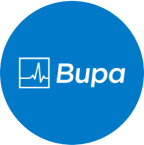
At Bupa, trust is everything
Our health and wellbeing information is regularly reviewed and maintained by a team of healthcare experts, to ensure its relevancy and accuracy. Everyone's health journey is unique and health outcomes vary from person to person.
This content is not a replacement for personalised and specific medical, healthcare, or other professional advice. If you have concerns about your health, see your doctor or other health professional.
1American Cancer Society. (2021). Invasive Breast Cancer. American Cancer Society.
You might also like...
Cancer: The importance of screening and early detection
Having regular health checks and screenings can help detect cancers early and improve survival rates. Learn about the common screening tests in Australia.
Health checks and screening at every stage of life
It’s important to make sure you get the right health checks throughout your life, from your 20s to your 50s and beyond. Check out our guide to learn more.
How to check for breast cancer
The better you know your breasts, the more likely you’ll be to notice any changes. Learn how to check for the signs of breast cancer at home.
Taking care of your mental health: Who do you call?
Looking for mental health support? Read this guide to find out what services are available.

